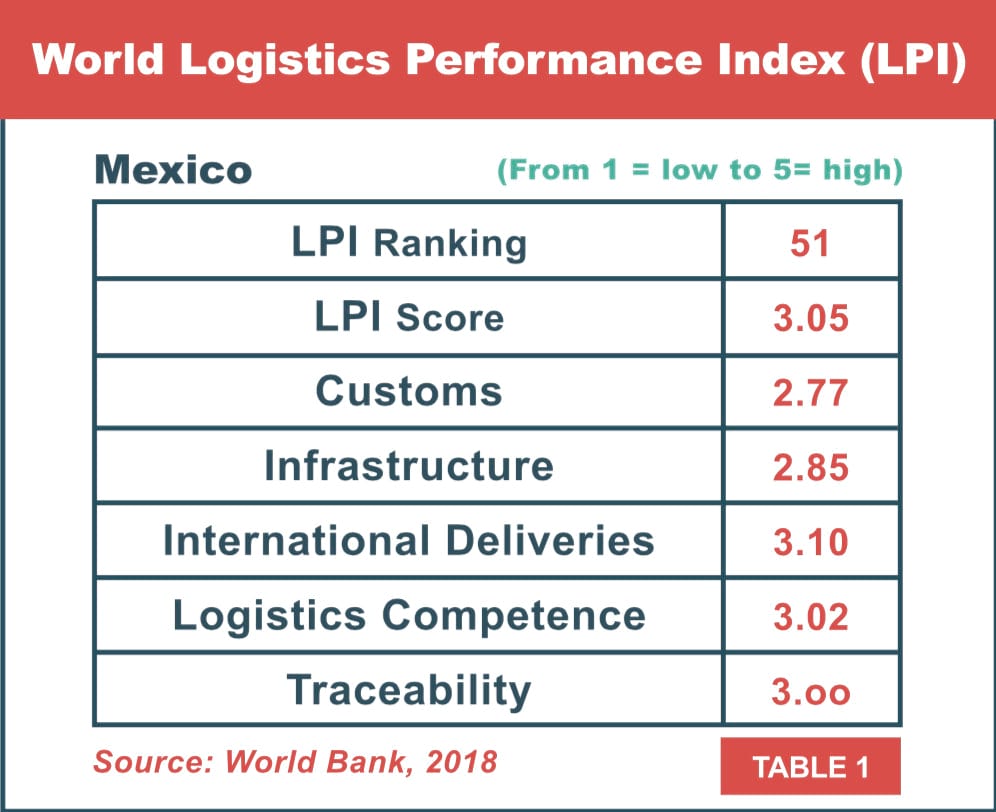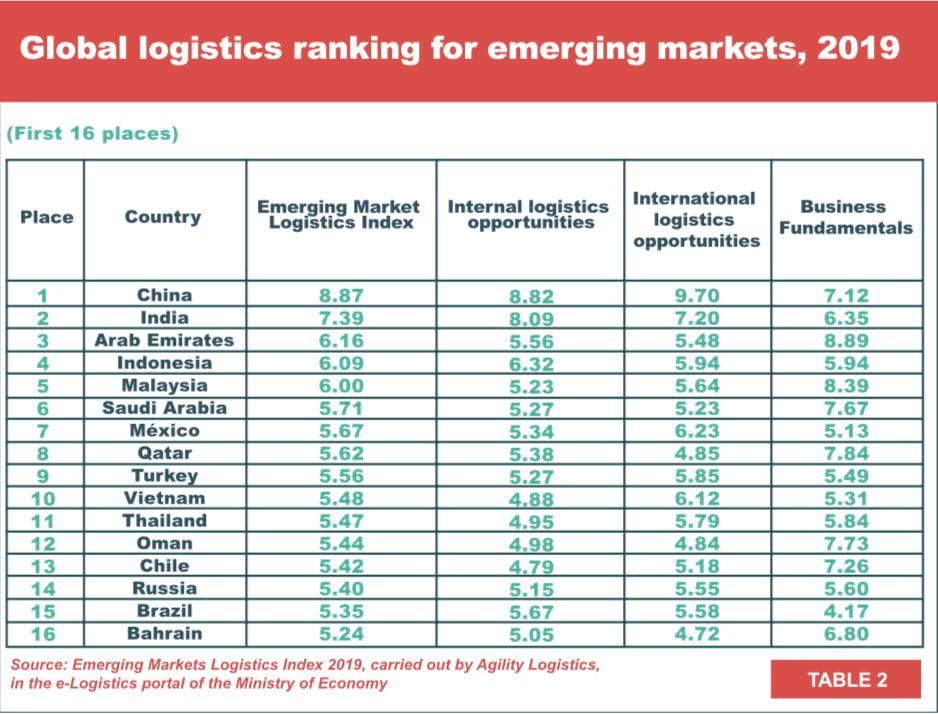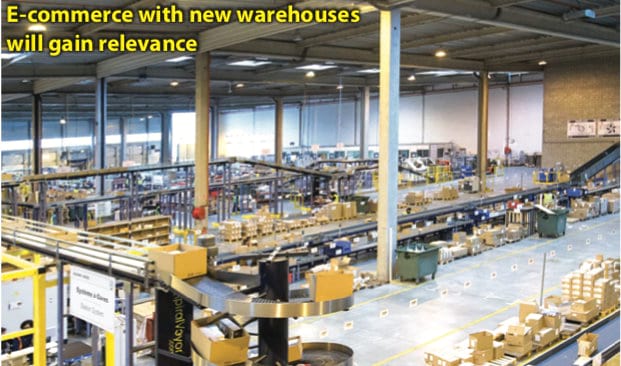Challenges of the Supply Chain in 2021

MEXICONOW Staff Report
If 2020 was an outlier year in many ways, 2021 is not much different. Despite “optimistic predictions and great opportunities” to reactivate the Mexican economy, “which will grow about 4%,” as indicated by the Organization for Economic Cooperation and Development, reaching positive estimates will not be an easy task.
According to experts in manufacturing issues, the only stable thing this year will be the constant changes in policies, treaties and sanitary regulations derived from COVID-19, but, above all, in the habits of consumers, before which the supply chain must respond with agility and innovation.
Rafael Vázquez, vice president of Latin America at Llamasoft, a company dedicated to providing supply chain solutions, comments that among the challenges that chains will face is achieving transparency, which, according to data from the annual Top Ten Trends report by Innova Market Insights, will be an essential element in 2021.
In other words, “consumers will favor brands and products that give them confidence, that are authentic and show a genuine interest in caring for the environment, but, above all, for their health.”
To achieve this virtuous state, it is necessary to generate many changes and updates in the supply of retail chains and, with it, the modification of transportation routes.
For example, “An alteration that implies making the correct alliances, but above all being opportune in that the moment to exhibit the new products goes according to the new habits, needs and trends,” says Vázquez.
Likewise, in 2021 the logistics sector, driven by the health crisis, will continue to have the challenge of achieving its modernization, digitization and centralization, “an obstacle that can only be eliminated with cutting-edge technologies [specifically Industry 4.0],” said Rafael Vázquez. “Besides, it is necessary to improve risk management plans that consider new forms of inputs, especially local ones.”

While this landscape requires reinventing supply chains to achieve the aforementioned agility and transparency, companies will also need to focus on incorporating best practices, processes and tools that help achieve recovery and growth objectives.
On this, Rafael Vázquez refers to the fact that “it is essential to incorporate technologies such as the Digital Twin, which creates virtual scenarios with which entrepreneurs can predict what would happen when choosing a certain supplier or changing their vehicles or distribution routes.
By integrating these kinds of tools, we will be providing the industry with resilience so that it is capable of responding to any type of disruption, such as the current contingency.”
Innovation at the logistics level
One of the key points in this transformation of supply chains is the improvement in logistics processes, as this is expected to satisfy the growing demand of online consumers (more than 69 million Mexicans will buy online in 2024, 16% more than in 2020, according to figures from the statistics firm, Statista).
If this is clear, the outlook is encouraging for companies, as it represents an opportunity to meet this growing demand by adhering to e-commerce trends, as the pandemic has accelerated the use of online platforms for the sale of products, and customers’ consumption preferences have already changed (they are now looking for simpler purchasing methods and faster deliveries, which shows that the reform of company logistics is necessary).
To do this, according to Mario Juárez, enterprise sales manager of Magento Commerce, a technological platform for online commerce, there are six trends to observe for improving logistics:

1) Personalized delivery methods. The pick & collect service will eventually need to be further developed to place orders online and collect them at the point of sale. “However, with this strategy, companies must streamline their supply chain to have the product ready once customer orders arrive.”
- E-commerce with new warehouses. According to Juárez, the “dark stores” will gain relevance due to their ability to reduce travel times. “These stores focused on online sales allow almost immediate deliveries.”
- Subscription models. Juárez anticipates that this sales scheme will boom, since consumers tend to consume products of the same brand consecutively. “This would imply that companies have better logistics, both in the warehouse and in deliveries, and that they automate their processes to meet demand.”

- E-commerce with new warehouses. According to Juárez, the “dark stores” will gain relevance due to their ability to reduce travel times. “These stores focused on online sales allow almost immediate deliveries.”
- Subscription models. Juárez anticipates that this sales scheme will boom, since consumers tend to consume products of the same brand consecutively. “This would imply that companies have better logistics, both in the warehouse and in deliveries, and that they automate their processes to meet demand.”
- Omnichannel. It is expected that in 2021 omnichannel sales will increase and the customer can follow up on their purchase via analogue or digital, with the possibility of picking up their order directly in the store. “This can be an alternative for those who want to buy while avoiding contact with other people.”
- Artificial intelligence. With the high online demand, “it will be necessary to optimize logistics operations with algorithms to be more efficient.”
- Internet of things. A growing practice among people is using voice assistants, so consumers could request purchases just by mentioning it . “Companies should have enough inventory and get ready to meet deliveries in a timely manner,” says Juárez.

Opportunity time
However, although the challenges are palpable in the current supply chains of the Mexican industry, there are also real areas of opportunity to improve management in times of crisis and to make production, distribution and delivery lines more efficient.
This is how Carlos Zegarra, leading management consulting partner at PwC Mexico, puts it: “Beyond facing a challenge, companies’ supply chains have a real opportunity to improve the management of their crisis strategies, or, if they do not have a continuity plan that generates proactive measures, they have the task of reacting to circumstances and establishing action plans to face situations such as the current one.” In this way, taking adequate advantage of these pandemic times will depend on the level of integration of the supply chain, as well as the agility and adaptability they possess. What are the key facts that Mexican companies can execute to mitigate the impact on their supply chains derived from COVID-19? Carlos Zegarra states them like this:
- Identify alternative supply routes for raw materials and critical supplies.
- Use substitute components, which can be supplied by local suppliers, without affecting the quality of the final product.
- Work with design and innovation areas to rapidly reconfigure products to allow the use of components that are available.
- Execute new trading strategies to activate the flow of stocks.
- Establish constant communication with your suppliers, to identify areas of opportunity and act accordingly.
As can be seen, the final objective of all this operational rethinking is none other than to advance demanded factors such as efficiency or correct traceability, while achieving a more committed and respectful logistics with the sustainability indicators of the chains. If COVID-19 has shown something, it is that in these times a new logistics is essential for the proper functioning of the national economy. As Argenis Bauza, digital transformation leader at KPMG Mexico puts it: “In the end, it is competitiveness in terms of creativity throughout the supply chain.”





